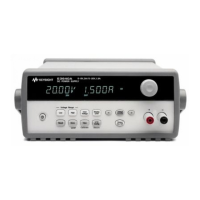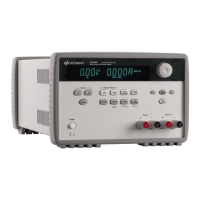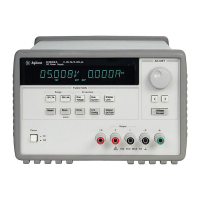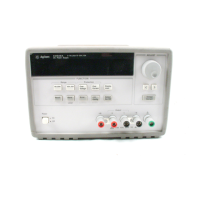Chapter 2 General Information
Output Connections
35
2
Voltage Drops
The load wires must also be large enough to avoid excessive voltage drops due to the
impedance of the wires. In general, if the wires are heavy enough to carry the
maximum short circuit current without overheating, excessive voltage drops will not
be a problem. The voltage drops across the load wires should be limited to less than
two volts. Refer to Table 2-1 to calculate the voltage drop for some commonly used
AWG copper wire.
Load Consideration
Capacitive Loading
The power supply will be stable for almost any size load capacitance. However, large
load capacitors may cause transient response ringing. Certain combinations of load
capacitance, equivalent series resistance, and load lead inductance may result in
instability (oscillation). If this occurs, the problem may often be solved by either
increasing or decreasing the size of the capacitive load.
A large load capacitor may cause the power supply to cross into CC or unregulated
mode momentarily when the output voltage is reprogrammed. The slew rate of the
output voltage will be limited to the current setting divided by the total load
capacitance (internal and external).
Inductive loading
Inductive loads present no loop stability problems in constant voltage mode. In
constant current mode, inductive loads form a parallel resonance with the power
supply’s output capacitor. Generally this will not affect the stability of the power
supply, but it may cause ringing of the current in the load.
Pulse Loading
In some applications the load current varies periodically from a minimum to a
maximum value. The constant current circuit limits the output current. Some peak
loading exceeding the current limit can be obtained due to the output capacitor. To
stay within the specifications for the output, the current limit should be set greater
than the peak current expected or the supply may go into CC mode or unregulated
mode for brief periods.

